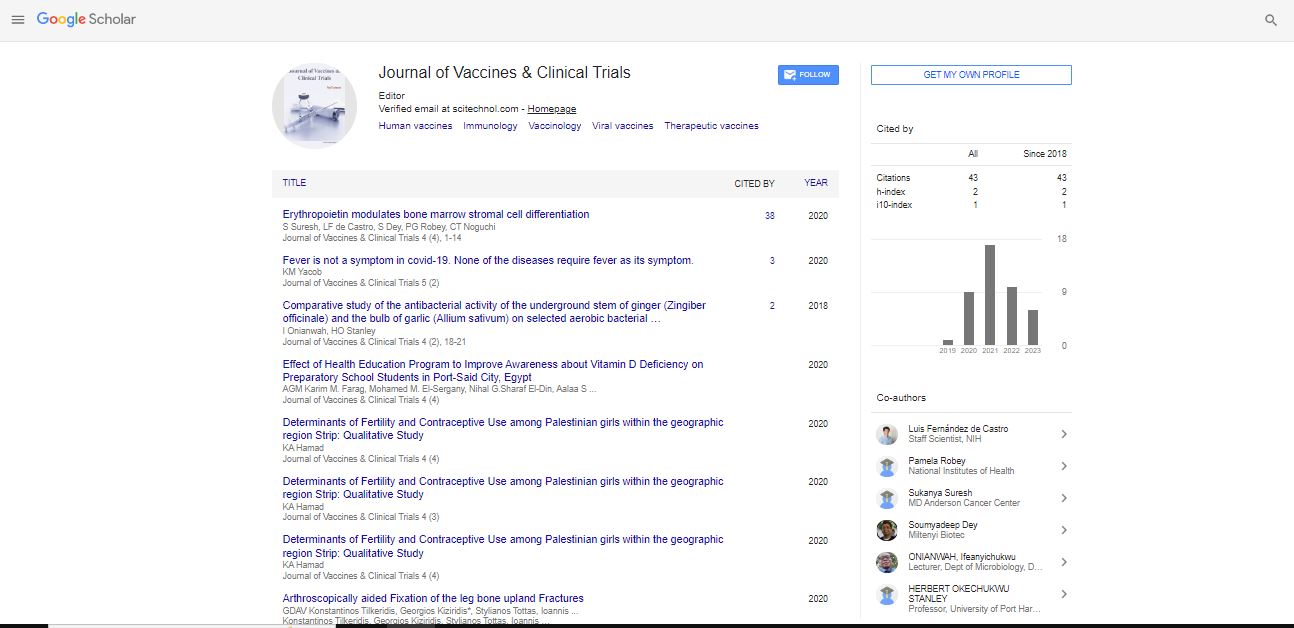Ablative Laser Vaccine Technology
Lotika Bajaj
Mercer University, USA
: J Vacc Clin Trials
Abstract
Introduction: Gonorrhea is one of the most common sexually transmitted disease, caused by Gram negative diplococcus bacteria, Nisseria gonorrhoeae. Resistance has emerged to many antimicrobials; therefore, preventative vaccine for gonorrhea can be of great importance in the healthcare because of wide occurrence of the infection. Langerhans cells in skin, are phagocytic cells that signal T-cells. Upon activation, T cells and macrophages drain into nearby lymph nodes causing an increased immune response.
Methods: Microparticles loaded with antigens, were prepared using spray drying method. The particulate vaccine formulation contains a biodegradable, biocompatible, non-antigenic and sustained releasing polymer components containing cross-linked albumin matrix and formalin-fixed inactivated whole-cell gonococci and adjuvants. The microparticles were characterized for percent yield, size, charge and poly dispersity index (PDI). The microparticulate vaccine was delivered via transdermal route using ablative laser (P.L.E.A.S.E.®). In-vivo efficacy of this vaccine was checked in 6-8 weeks old swiss webster mice. Mice were administered one prime dose at day 0 followed by two booster doses at week 2 and 4. There were five groups (n=6) in this study and animals were challenged with Gonorrhea bacteria at week 10, and sacrificed at week 12. Their lymph nodes and spleens were collected and levels of the immune cells such as CD4+ and CD8+ T cells in the collected spleens and lymph nodes were measured using BD Accuri™ C6
Biography
Lotika Bajaj, Ipshita Menon & Nasir Uddin are from Mercer University and they are expertise in Novel Vaccine Technology and currently working on Gonorrhea Vaccine, RSV Vaccine.
E-mail: Lotika.Bajaj@live.mercer.edu
 Spanish
Spanish  Chinese
Chinese  Russian
Russian  German
German  French
French  Japanese
Japanese  Portuguese
Portuguese  Hindi
Hindi 